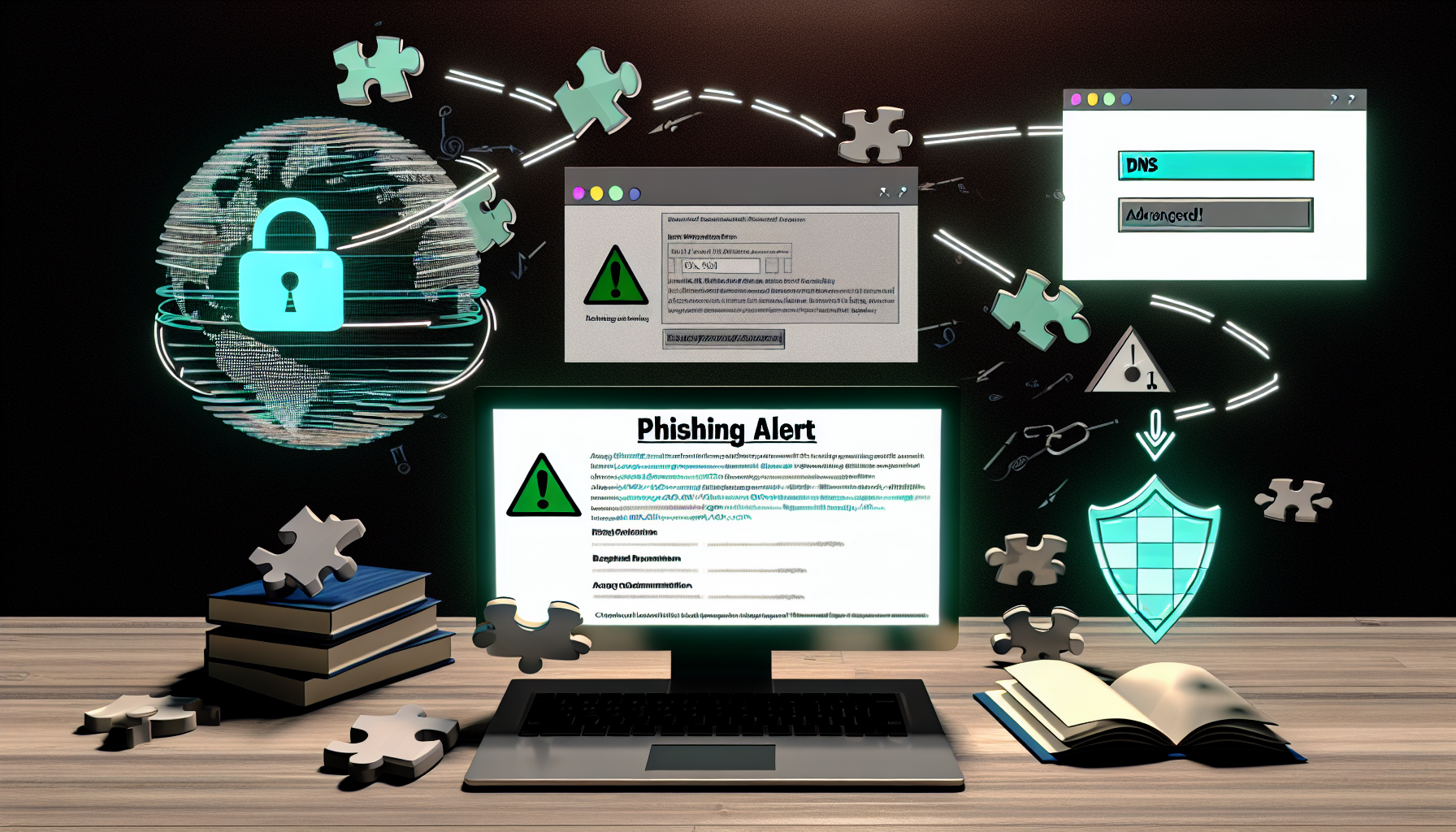Discover more from ESSGroup
Subscribe to get the latest posts sent to your email.
By implementing these steps, organizations can enhance their security measures, protect sensitive data, and ensure business continuity.


As cyber threats evolve, ensuring robust system security has become more critical than ever. Whether you’re managing personal data or running a nonprofit organization, taking proactive steps to secure your systems is essential. Here are five easy steps to enhance your system security in 2024
By following these steps, you can significantly enhance your system security in 2024.
Subscribe to get the latest posts sent to your email.
By implementing these steps, organizations can enhance their security measures, protect sensitive data, and ensure business continuity.
Lorem Ipsum is simply dummy text of the printing and typesetting
industry. Lorem Ipsum has been the industry's

Threat Overview
A new threat report published by AlienVault on April 25, 2025, reveals a disturbing trend in the cybersecurity landscape. Kaspersky researchers have uncovered a sophisticated version of the Triada Trojan that is being distributed through infected Android device firmware. This malware is embedded into system files before devices are sold, making it nearly impossible for users to detect or remove.
The Triada Trojan infects the Zygote process, which is crucial for launching applications on an Android device. By compromising this process, the malware can infiltrate all apps installed on the device, including popular ones like WhatsApp, Facebook, and various banking applications. This modular architecture allows attackers to deliver targeted payloads designed to steal cryptocurrency, credentials, and other sensitive data.
The implications of this threat are severe. Over 4,500 infected devices have been detected worldwide, with the highest concentrations in Russia, UK, Netherlands, Germany, and Brazil. The financial impact is already significant, with attackers having stolen over $264,000 in cryptocurrency so far.
Understanding the Threat
The Triada Trojan’s ability to embed itself into device firmware makes it a particularly insidious threat. Traditional antivirus software and even factory resets may not be sufficient to remove the malware, as it resides at a deeper level within the system files. This persistence allows the attackers to maintain control over the infected devices for extended periods, increasing the potential for data theft and financial loss.
The modular nature of the Triada Trojan enables attackers to adapt their tactics quickly. They can deploy different payloads tailored to specific targets, making it challenging for security teams to anticipate and defend against all possible attack vectors. The malware’s capabilities include intercepting SMS messages, making unauthorized calls, and acting as a reverse proxy, further expanding its potential for harm.
Geographical Distribution
The threat report highlights that the majority of infected devices are located in Russia, UK, Netherlands, Germany, and Brazil. This distribution suggests that the attackers may be targeting specific regions or markets where Android devices are widely used. The high number of infections in these countries underscores the need for heightened vigilance and proactive security measures.
Recommendations for Mitigation
Given the severity of this threat, it is crucial for both individuals and organizations to take immediate action to protect themselves. Here are some recommendations:
User Education: Educate users about the risks associated with downloading apps from unofficial sources. Encourage them to stick to trusted app stores and avoid sideloading applications.
Network Monitoring: Implement network monitoring tools to detect unusual activity that may indicate a compromised device. This can help in identifying infections early and taking appropriate action.
Incident Response Plan: Develop and regularly update an incident response plan that includes steps for dealing with firmware-level malware. Ensure that all stakeholders are aware of their roles and responsibilities in case of an infection.
Collaboration with Manufacturers: Work closely with device manufacturers to ensure that they are aware of the threat and are taking steps to mitigate it. Encourage them to provide regular security updates and patches.
Regular Audits: Conduct regular security audits of all devices within the organization. This can help in identifying vulnerabilities and ensuring that all devices are compliant with security policies.
Data Encryption: Implement strong encryption for sensitive data stored on devices. This can help protect against data theft even if a device is compromised.
Multi-Factor Authentication (MFA): Enforce the use of MFA for accessing critical systems and applications. This adds an extra layer of security, making it harder for attackers to gain unauthorized access.
Backup Solutions: Regularly back up important data to secure locations. In case of a malware infection, this ensures that data can be restored without significant loss.
Conclusion
The discovery of the new version of the Triada Trojan embedded in Android device firmware is a stark reminder of the evolving nature of cyber threats. The ability of this malware to infect system files and compromise all apps on a device makes it a formidable adversary. However, by taking proactive measures and staying informed about the latest threats, individuals and organizations can significantly reduce their risk of falling victim to such attacks.
For more detailed information, please refer to the external references provided in the threat report:
Stay vigilant and prioritize cybersecurity to protect against this and other emerging threats.

Threat Overview
In today’s digital landscape, cyber threats are becoming increasingly sophisticated. One such alarming trend is the creative use of Domain Name System (DNS) mechanisms by threat actors for malicious activities. A recent threat report published by AlienVault on March 31, 2025, highlights a significant development in this arena. The report, titled ‘PhaaS actor uses DoH and DNS MX to dynamically distribute phishing,’ details how Infoblox discovered a phishing kit that leverages DNS mail exchange (MX) records to dynamically serve fake login pages.
This phishing kit has been observed spoofing over 100 brands, making it a formidable threat to both individuals and organizations. The use of DNS mail exchange (MX) records in this manner is particularly concerning because it allows attackers to bypass traditional security measures and deliver highly targeted phishing attacks. By exploiting the trust associated with legitimate domains, these fake login pages can deceive even the most vigilant users.
The report provides a comprehensive analysis of the tactics, techniques, and procedures (TTPs) employed by this threat actor group. The confidence level in the reliability of this report is 100%, indicating that the information presented is highly credible. With a reliability rating of A – Completely reliable, security professionals can trust the findings and take appropriate actions to mitigate the risks.
The phishing kit operates by using DNS over HTTPS (DoH) to obscure its activities from conventional monitoring tools. DoH encrypts DNS queries, making it difficult for security solutions to detect and block malicious traffic. This technique enhances the stealthiness of the phishing campaign, allowing attackers to evade detection for extended periods.
The dynamic nature of the phishing kit is another critical aspect highlighted in the report. By utilizing DNS MX records, the threat actors can rapidly change the content served on the fake login pages. This adaptability enables them to tailor their attacks to specific targets or respond quickly to changes in security defenses. The ability to dynamically distribute phishing pages makes this threat particularly challenging to counter.
Infoblox’s discovery of this sophisticated phishing kit underscores the need for advanced security measures. Organizations must adopt a multi-layered approach to cybersecurity, incorporating both technical controls and user awareness training. By understanding the TTPs employed by these threat actors, security teams can better prepare their defenses and respond more effectively to potential attacks.
Recommendations for Mitigation
Conclusion
The discovery of this sophisticated phishing kit highlights the evolving nature of cyber threats. As threat actors continue to innovate and adapt their tactics, organizations must remain vigilant and proactive in their security measures. By understanding the TTPs employed by these actors and implementing robust security controls, organizations can better protect themselves against dynamic phishing attacks.
For more detailed information on this threat report, please refer to the following external references:
By staying informed and taking proactive measures, organizations can significantly reduce their risk of falling victim to these advanced phishing attacks.

Threat Overview
The ever-evolving landscape of cyber threats continues to challenge organizations worldwide. Recently, Cisco Talos has uncovered a new wave of threats disguised as legitimate AI tool installers. This emerging trend leverages the growing popularity of artificial intelligence across various industries to deceive unsuspecting users into installing malicious software.
CyberLock Ransomware
One of the identified threats is CyberLock ransomware, developed using PowerShell. This malware specifically targets and encrypts certain files on infected systems, rendering them inaccessible until a ransom is paid. The attackers demand $50,000 in Monero, a cryptocurrency known for its privacy features, making it difficult to trace transactions.
Lucky_Gh0$t Ransomware
Another significant threat is Lucky_Gh0$t ransomware, a variant of the Yashma ransomware. This malware is distributed as a fake ChatGPT installer, tricking users who are eager to explore AI-driven chatbot capabilities. Once installed, it encrypts files and demands a ransom for their release.
Numero Malware
Additionally, a newly-discovered malware called Numero has been identified. Masquerading as an AI video creation tool, this malware manipulates the Windows GUI, making systems unusable. The sophisticated design of Numero makes it particularly dangerous, as it can disrupt operations without immediately alerting users to its presence.
Distribution Methods
Threat actors are employing various tactics to distribute these fraudulent installers. SEO poisoning is one such method, where malicious links are promoted in search engine results to attract potential victims. Social media platforms are also being exploited to spread misinformation and lure users into downloading the fake AI tools.
Targeted Sectors
The primary targets of these malicious campaigns include businesses in B2B sales, technology, and marketing sectors. These industries are particularly vulnerable due to their heavy reliance on advanced technologies and frequent adoption of new software tools.
Recommendations for Mitigation
To protect against these emerging threats, organizations must adopt a multi-layered security approach:
Implement Robust Security Measures: Deploy advanced threat detection and response systems, such as endpoint protection platforms (EPP) and endpoint detection and response (EDR) solutions. These tools can help identify and mitigate threats in real-time.
Regular Software Updates: Ensure that all software and operating systems are up-to-date with the latest security patches. This reduces the risk of exploitation through known vulnerabilities.
Network Segmentation: Segment the network to limit the spread of malware within the organization. By isolating critical systems, organizations can minimize the impact of a potential breach.
Incident Response Plan: Develop and regularly update an incident response plan. A well-prepared response team can quickly identify, contain, and eradicate threats, reducing downtime and potential damage.
Monitoring and Logging: Implement comprehensive monitoring and logging mechanisms to detect unusual activities and potential security breaches. Regularly review logs for any signs of compromise and take immediate action if necessary.
Backup Data: Regularly backup critical data and ensure that backups are stored securely offsite. In the event of a ransomware attack, organizations can restore their systems without paying the ransom.
By adhering to these best practices, organizations can significantly enhance their security posture and protect against the evolving threats posed by cybercriminals camouflaging malware as AI tool installers.
Conclusion
The discovery of new threats disguised as legitimate AI tools underscores the need for vigilance and proactive security measures. Organizations must stay informed about emerging threats and continuously update their defenses to safeguard against potential attacks. By taking a comprehensive approach to cybersecurity, businesses can mitigate risks and ensure the integrity and availability of their systems and data.
For additional information, refer to the external references provided by Cisco Talos:
https://blog.talosintelligence.com/fake-ai-tool-installers/
https://otx.alienvault.com/pulse/683877ce5988443994d884f3
These resources offer detailed insights into the threats and provide further recommendations for protection.

Subscribe now to keep reading and get access to the full archive.